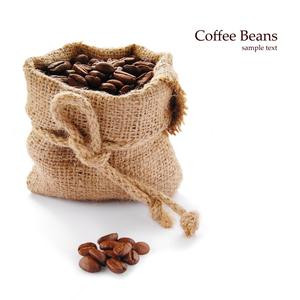Basic knowledge about coffee trees the origin of coffee trees is in Ethiopia, Africa.

The origin of the coffee tree is Ethiopia in Africa. In botany, coffee trees belong to the long green trees of the subgenus Rubiaceae, and coffee beans, commonly known as coffee beans, are actually the seeds of the fruit of coffee trees, just because they are shaped like beans, so they are called coffee beans.
Climate is the decisive factor for coffee cultivation. Coffee trees are only suitable for growing in the tropics or subtropics, so the zone between latitude 25 degrees south and north is the most suitable for growing coffee. This coffee production zone is generally referred to as "coffee belt" or "coffee area".
White flowers, red fruit. Evergreen shrubs of the genus Coffee, belonging to the Rubiaceae family in botany, can reach a height of up to 10 meters, while artificial growers are only two to four meters tall because of pruning. Coffee will probably seed in three to four years, and the yield will decrease after 20 to 25 years, but some coffee trees will still bear fruit after a hundred years of life.
The branches of the coffee tree grow opposite and grow horizontally or drooping, while the leaves of the coffee tree are opposite on the short-diameter branches. The two main species are Arabica (Coffee Arabica) and Robusta (Coffee Robusta). The leaves of Arabica are about 15 centimeters long. Robusta's leaves are long, soft oval or pointed, and bright green in color.
The origin of caffeine
The first flowering period of the coffee tree is about three years old. the white five-petal tube-shaped flowers are filled with a faint scent of jasmine and the inflorescences are arranged in dense clusters.
Flowers wither after two or three days of blooming and begin to bear fruit after a few months. The fruit is a drupe with a diameter of about 1.5cm. It turns green at first, then turns yellow gradually, and turns red when ripe. It is very similar to cherries, so it is called cherry coffee (Coffee Cherry). It can be harvested at this time.
Coffee fruit contains two seeds, namely coffee beans. The two beans are connected face to face with each other on one side of the plane. Each coffee bean has a thin outer film, which is called silver skin, and its outer layer is covered with a yellow outer skin, called endocarp.
The whole coffee bean is wrapped in sticky pulp to form the coffee pulp, which is soft and sweet, with the outermost shell.
Species of caffeine trees
At present, the most important coffee beans in the world mainly come from Arabica, Robasta and Liberia. these three varieties of coffee beans are the three original species of coffee trees, and the quality of coffee beans produced by other coffee trees is also higher than that of other coffee trees.
The output of Akabica beans accounts for 70% of the world's output; the world-famous Blue Mountain Coffee and Mocha Coffee are almost all Arabica species. The Robastian coffee tree, which originated in the Congo in Africa, accounts for about 20% to 30% of the world's production.
Refined method of caffeine
Coffee beans are the seeds in the coffee fruit, which are exposed to strong sunlight and are not removed until the shell is cracked. This method is called "non-washing" or "natural drying".
Another way is to put the coffee fruit in the sink, soak in water and soften and then remove the "washing" of the flesh. The washing refining process is to put the harvested coffee fruit in a sink and soak for 24 to 28 hours. In this way, only the ripe fruit will sink, while the immature fruit will float on the water, so that the ripe fruit can be selected.
After that, put it into the pulp removal machine, remove the skin and pulp, leaving only seeds. Then put the seeds in the fermentation tank for half a day to a day, so that the pulp residue on the seeds will fall off as a result of fermentation.
Finally, rinse with water, dry in the sun, and remove the seed coat with a sheller. This method has less sundries, and can pick out immature coffee beans, so the appearance and quality are better.
The non-washing operation procedure is relatively simple, as long as the program management is perfect, mature and high-quality coffee beans can be obtained. However, this way is easily affected by climate, and the proportion of incomplete beans is very high. In addition, coffee beans treated in this way often have an earthy taste and are not suitable for long-term preservation.
Baking and tasting
Since the Arabs discovered the coffee beans, the first way to eat them is to put the whole fruit of the coffee into the mouth and chew it to get its juice.
Later, they ground the coffee beans from the fruit and mixed them with animal fat as a physical supplement for caravans to trade far away.
After that, around 1000 AD, it was changed to the method of boiling raw beans into soup. It was not until the 13th century that the Arabs invented the method of roasting coffee beans, so that the charming aroma of coffee was completely pulled out, so that coffee was no longer just a pick-me-up, but a worldwide drink.
Generally speaking, according to the division of baking degree, the roughest can be divided into three stages: shallow stir-frying, medium stir-frying and deep frying. Coffee beans can cause subtle changes in taste and flavor due to different degrees of roasting.
Generally speaking, if the baking degree is shallow, the sour taste is heavier. With the deepening of the baking degree, the sour taste will gradually disappear, and the bitter taste will become more prominent. What kind of roasting degree can give birth to the most delicious coffee? In fact, the depth of baking must be based on the types, characteristics, brewing methods, usage and, most importantly, personal preferences, to determine the most appropriate baking degree.
Important Notice :
前街咖啡 FrontStreet Coffee has moved to new addredd:
FrontStreet Coffee Address: 315,Donghua East Road,GuangZhou
Tel:020 38364473
- Prev

There are three main native species of coffee in coffee varieties.
There are three main varieties of coffee: Arabica Arabica, Robusta Robusta, and Liberia Liberica. The first two are relatively long-term, while the latter is hardly in circulation on the market and is only traded within parts of West African countries. Arabica is mainly produced in Brazil, Colombia, Guatemala, Jamaica, Mexico and other American countries, and Costa Rica in the Caribbean.
- Next

Coffee producing countries Coffee varieties Arabica Coffee
Bolivian coffee variety: Arabian coffee production: 150.000 bags with snow-capped mountain terrain, vast plateau and tropical rain forest, Bolivia has ideal coffee production conditions. More than 90 per cent of the coffee produced in Bolivia is produced in high-temperature and humid climates, with elevations of 500 to 1600 metres above sea level in the tropics of La Paz. Another very important production area
Related
- Detailed explanation of Jadeite planting Land in Panamanian Jadeite Manor introduction to the grading system of Jadeite competitive bidding, Red bid, Green bid and Rose Summer
- Story of Coffee planting in Brenka region of Costa Rica Stonehenge Manor anaerobic heavy honey treatment of flavor mouth
- What's on the barrel of Blue Mountain Coffee beans?
- Can American coffee also pull flowers? How to use hot American style to pull out a good-looking pattern?
- Can you make a cold extract with coffee beans? What is the right proportion for cold-extracted coffee formula?
- Indonesian PWN Gold Mandrine Coffee Origin Features Flavor How to Chong? Mandolin coffee is American.
- A brief introduction to the flavor characteristics of Brazilian yellow bourbon coffee beans
- What is the effect of different water quality on the flavor of cold-extracted coffee? What kind of water is best for brewing coffee?
- Why do you think of Rose Summer whenever you mention Panamanian coffee?
- Introduction to the characteristics of authentic blue mountain coffee bean producing areas? What is the CIB Coffee Authority in Jamaica?

